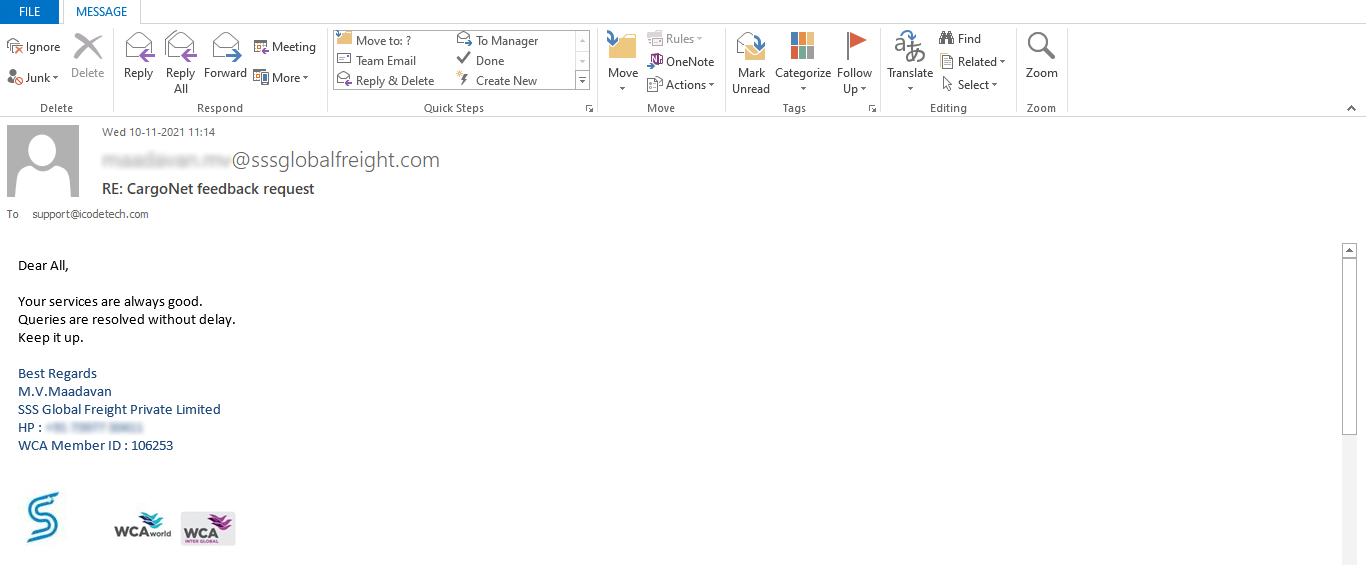
OCR (Optical Character Recognition) technology is a software technology that enables the recognition of text characters within an image, such as a scanned document, photograph, or screenshot. OCR technology converts the image into machine-readable text, allowing for the automatic processing of text data.
The technology works by analyzing the shapes of characters in an image and comparing them to a pre-existing database of known characters. OCR software uses complex algorithms to identify the characters and convert them into digital text. Once the text has been extracted, it can be further processed and analyzed for various purposes, such as data entry, document classification, and content search.
OCR technology, or Optical Character Recognition technology, is a software tool that is increasingly being used in the freight forwarding industry to transform the way shipping documents are processed. Traditionally, freight forwarding involves a significant amount of manual data entry, as shipping documents such as bills of lading and customs declarations need to be processed and input into various systems. This can be a time-consuming and error-prone process, and can result in delays, mistakes, and other inefficiencies.
The benefits of using OCR technology in freight forwarding are numerous. By improving operational efficiency and accuracy, freight forwarders can process more shipments in less time, reduce errors and delays, and improve customer satisfaction. In addition, OCR technology can provide better visibility and tracking of shipments, which can improve transparency and trust in the freight forwarding process. Finally, by ensuring compliance with regulatory requirements, OCR technology can help freight forwarders avoid fines and penalties.
In conclusion, OCR technology has emerged as a critical solution in the freight forwarding industry. Its benefits, including faster and more accurate data entry, improved tracking and visibility, enhanced compliance, and streamlined operations, have made it a popular choice among freight forwarding companies. OCR technology has the potential to transform the industry, enabling companies to operate more efficiently, reduce costs, and improve customer satisfaction. However, it is essential to note that OCR technology is not a silver bullet, and it should be used in conjunction with other technologies and processes to optimize the freight forwarding process fully.
Yes! The Reports can export to PDF format, Excel, Word Format etc.
Yes! B/L print outs can be taken in a Single click
Freight forwarders provide their customers with a range of services including consolidation, documentation, freight payment and customs clearance. The service is offered by freight forwarders who serve as an intermediary between the shipper and the forwarder’s transportation network.
The world is calling, but the struggle with complex international exports can be overwhelming. Shipping software allows you to:
Optimize systems: Automate operations, expand productivity, and increase accuracy.
To achieve global ordering: Track inventory in real time; compatibility with global networks; and make decisions based on data.
Enhanced customer service: Respond quickly, provide clear information, and rise above language issues.
Choose the right freight forwarding software to open your company to global growth.
Choosing the right freight software is like choosing your superhero gear – it empowers you to handle complex logistics and soar to new heights. Here are some basics to ensure your software is a real winner:
Effortless Shipping: Imagine recording, tracking and reporting on shipments with a few clicks. Your software may simplify these processes, freeing you up to focus on bigger things.
Simplified bookkeeping: Creating accurate quotes, invoices, and report cards is unlike paper invoices. Look for software that simplifies paperwork and keeps everything organized.
Strong customer relationships: A robust CRM system in your software allows you to manage customer interactions, send personalized communications, and foster strong relationships – the foundation of any successful business.
Data push decisions: Your software program can be your own record analyzer. Look for features that provide insightful analysis of overall performance, identify trends, and empower your company to make informed choices.
Easy conversation: Does your software play well with others? Integrating accounting, CRM and visit management systems improves information flow and eliminates accounting silos – a huge win for efficiency
By installing those essential components, you equip your logistics with the software muscle needed to overcome any system challenges and achieve breakthrough success
A quantity of steps are worried in integrating and employing freight forwarding software program (CargoNet) inside your commercial enterprise, these encompass:
Evaluation and Planning: Assess the existing freight forwarding processes in your organisation and discover regions to be stepped forward. Establish your precise requirements and dreams for imposing CargoNet software program application. Develop a plan of implementation along with timeframes, sources and key individuals.
Customization and Configuration: Collaborate with our implementation group in order to personalize the software program in line with the workflows or processes used by your very own organization. Set up configurations, user privileges, in addition to connections to other systems employed across your business enterprise.
Data Migration: Prepare your present day Freight Forwarding statistics for migration into CargoNet. Make certain that statistics is accurate and sound by way of purging it off old data even as formatting it efficaciously












Share your information for instant access :